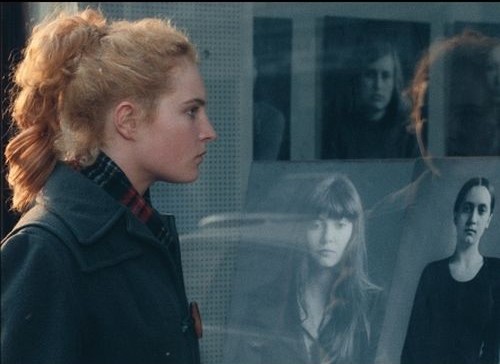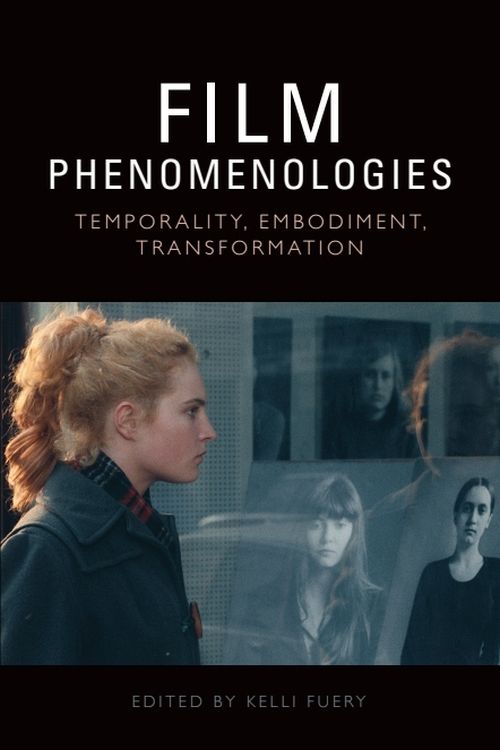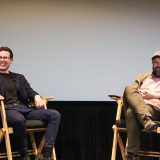
Faculty Books: Film Phenomenologies – Temporality, Embodiment, Transformation
November 6, 2024

Faculty Books: Film Phenomenologies – Temporality, Embodiment, Transformation
Film in the 21st century has completely shifted its identity from the big screens in theatres to the small screens we carry with us every day. This means the study of entertainment, especially what we understand as ‘cinema’ to be, has been redefined, precisely because of how our use of entertainment has changed.
This is why Dr. Kelli Fuery (Creative and Cultural Industries) expanded classical methods to include a more diverse representation of thinkers and approaches in the anthology film Phenomenologies – Temporality, Embodiment, Transformation (Edinburgh University Press, 2024), which she recently edited.
The Voice of Wilkinson sat down with Dr. Fuery (editor) to talk about Film Phenomenologies.
Voice of Wilkinson: For those who don’t know what film phenomenology is, can you give us a little background?
Kelli Fuery: Phenomenology focuses on experiences that can be intuitively understood and analyzed in their pure essence, rather than on experiences perceived as real facts in the empirical world. Put another way, phenomenology is interested in describing experiences that we are conscious of, specifically how they appear to us… The smell of the air, the temperature on your skin, the weight of the atmosphere – how the experience unfolds itself to you. Phenomenology wants to explore ‘how’ the world appears to us in any given moment or situation, much more than ‘what’ appears.
By including globally prominent scholars whose research reflects the pluralism in what we call ‘film’ today, I was able to show that equally, there can be no singular phenomenology. It is more productive to think of phenomenologies and highlight perspectives that go beyond the first person so that we can value and validate the experiences of others that are not our own.
VoW: Tell me about the book and the three parts it surrounds: Temporality, Embodiment, Transformation
KF: Temporality, Embodiment, and Transformation form the three parts of the book and represent core areas of study within the field of phenomenology. When I shared my vision for the book with each contributing author, I gave them free rein to write on whatever topic or case study they wished. The only thing I stipulated was the aim to prioritize diverse representation in a scholarly approach so that these canonical areas of phenomenology could begin to include new voices and areas of investigation. The authors have focused on feminist time, play, scale theory, disability and dance, entangled archives of colonialism, abortion, stardom, mood and atmosphere, and even AI to begin to map out potential futures in film and media philosophy.
VoW: What did you learn while researching for this book?
KF: This is the first edited book I have published. When I had the idea, I had initially thought it would become the next book I wrote myself, but given the main premise was to be inclusive and maintain differences in perspectives, I knew it had to be a collection of esteemed scholars. Every scholar is a recognized name in their field, so the book is of exceptional quality and rigor. I sent out my invitations thinking I may get a few replies but everyone I approached said yes! So, I suppose you could say I learned that film phenomenology is a topic many are interested in and want to explore further.
“Film Phenomenologies was truly a joy to put together and a labor of love because all work was submitted on time and I am fortunate to have an incredible publishing relationship with Edinburgh University Press, which is the academic stable for film philosophy. I think I’ve been ruined for any future edited books!”
VoW: How do you see the book being used in your courses?
KF: I currently have two students using Film Phenomenologies for their research – Sophia Rubino, a graduate student writing their Masters in Film and Media Studies thesis, and Carol Liddle, an undergraduate completing an independent research study on feminist film phenomenology. These students are conducting very engaging and interesting work.
I’d love to assign it to an upper-division, honors, or graduate-level class. Its interdisciplinary focus works well with students in the Creative and Cultural Industries program because we have so many students from all majors across campus. These ideas filter into my classes already, such as Media, Culture, and Emotion, or Bizarre Objects – especially when thinking about our media use and relation. More and more we need to think about experience economies and this is one way to do just that. I also think it would work very well with my previous book on Ambiguous Cinema.
VoW: What do you hope readers gain from Film Phenomenologies?
KF: That’s a great question. I wanted to foreground critical phenomenology as a cutting-edge approach to the study of moving-image experience. We are trained to learn the canon and to understand why it is important. In philosophy or phenomenology, it is no different. The important and celebrated works are typically from White, European Men because these are the people who we have been told to study over decades. But these are not the only thinkers we must engage with. We are now at a time where we can think about their works, determine what value remains, and decide what is to be questioned by placing them in conversation with contemporary scholars who provide much-needed and often neglected perspectives.
Each chapter specifically uses diverse thinkers who have either been neglected or marginalized in the field of phenomenology. The aim was to center them on the future of the field and the developments it has yet to take.
VoW: Is there another project for us to look forward to soon?
KF: My next book is called Bizarre Objects. It has been sitting inside of me for some time and I’m lucky enough to have had grant support from Dean Keene to be able to begin work on it.
Bizarre Objects explores the interconnected themes of hallucination and transformation, specifically attending to their manifestation through our use of media objects.
I’ve taken the term ‘bizarre objects’ from psychoanalyst Wilfred Bion’s work with schizophrenics in the mid to late 1950s, and it plays an unsung role in his overall theory of thinking. I want to use his notion of the bizarre object to explore the assumption that social media use functions similarly to psychotic thinking.
VoW: We can’t wait to read it!

